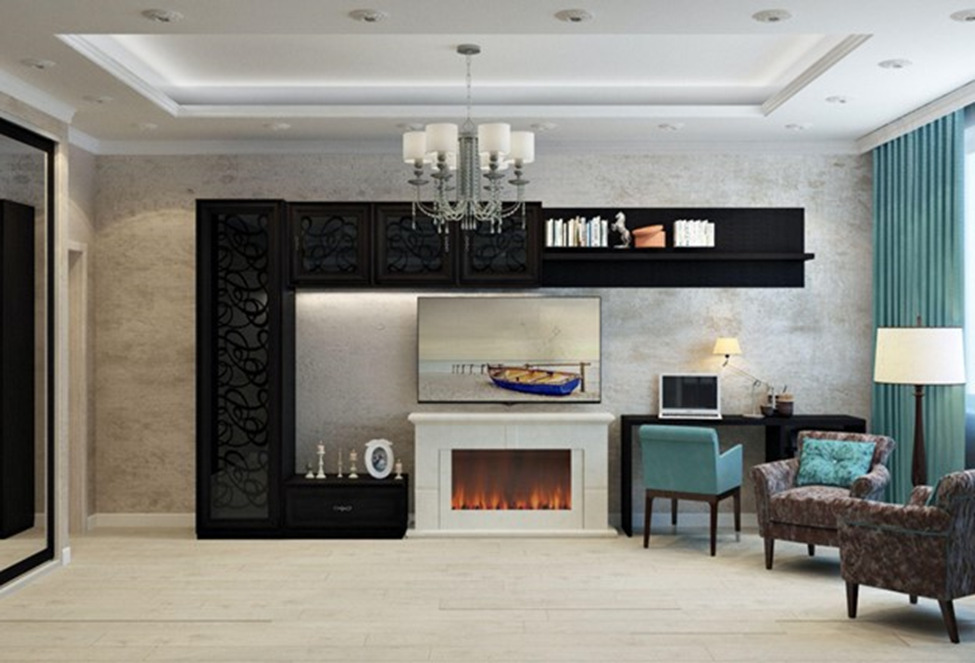Electric fireplaces are powered by the same energy that runs the rest of the electronics and the gadgets in your house. Because they don’t have a distinct energy need, they’ll all be able to run on the same household electrical source.

They are meant to connect to the electricity grid that you have. It is necessary to use a dedicated outlet whenever one of these is being installed. As far as wall mounted electric fireplaces go, they should be connected to a dependable power source in order to guarantee that it has adequate power to function.
IoT Powered Fireplaces
Other kinds of progress have been made in our society recently, and they are mirrored in the development of contemporary electric fireplaces. The Internet of Things, for instance, is slowly but certainly supplanting it. The Internet of Things (IoT) consists of interconnected systems and sensors that are able to communicate with one another. Electric fireplaces have temperature sensors that help them run safely.
The temperature sensor has the ability to maintain the electric fireplace risk-free and in compliance with all applicable safety regulations. The process of automating systems has been making slow but steady progress.
Quite a few of today’s systems are now completely automated. Programming and automation are being applied to home appliances so that they may communicate wirelessly and online with other electronic equipment. The use of encryption technology guarantees that the functioning of these appliances across distant networks is carried out in a secure manner.
As with any other IoT item, contemporary electric fireplaces may be controlled and monitored in the same way. Click here to learn more about IoT. Even when they aren’t there, homeowners who have a mobile app that can connect to their fireplace remotely may monitor the temperature of their homes using the device even when they aren’t there. In the event that the temperature is too high, or if they plan to be gone for an extended period of time, they may set a timer to turn the fireplace off.
Since their inception, fireplaces have been widely regarded as one of the least effective methods for heating a house. However, the proliferation of electric fireplaces in recent years has led to an improvement in the effectiveness of this kind of heating appliance.
There are ways to enhance the low energy efficiency of conventional open fireplaces, such as installing wood burning stoves; yet, the question remains as to whether or not electric fireplaces are energy efficient.
Electric fireplaces are capable of converting the whole available energy into heat while wasting very little, if any, of it. Electric fireplaces with LED illumination and thermostatic control consume just the amount of energy that is required to maintain the appropriate temperature in a room.
However, the energy efficiency of some kinds of electric fireplaces will be higher than that of others. There are several factors that contribute to the energy efficiency of an electric fireplace over traditional fireplaces, and we’ve outlined some of the best things to look for when purchasing one.

Why Electric Fireplaces Use Less Power
Because practically all of the energy that is spent is transformed into heat, electric fireplaces have the potential to achieve an efficiency rating of one hundred percent. Electric fireplaces don’t create a genuine flame, thus they don’t emit smoke or other pollutants.
Electric fireplaces are a wise investment for your house when it comes to enhancing the heating capacity of a space while also assisting in lowering the energy required to create the heat, among other benefits.
As a result of these factors, electric fireplaces are regarded as energy efficient.
- The whole amount of energy (electricity) that is used is transformed into heat.
- No harmful byproducts, like waste gasses or smoke, are made, which could make the process less effective.
- In most cases, it is possible to utilize flames even while the heater is turned off.
- No solid fuels burned.
- LED illumination (https://www.energystar.gov/products/lighting_fans/light_bulbs/learn_about_led_bulbs.) should be used instead of halogen bulbs for the lighting.
- Control through thermostat to maintain desired temperatures while minimizing energy use.
- 100 percent Efficient
Except for gas fireplaces, no other form of fireplace uses fuel other than wood or coal. This reveals that electricity serves as the driving force behind not just the flame effects but also the heater.
More information on how an electric hearth works may be found here, but in general, a light source is used to provide the flame effects and a radiant heater, such as a fan-driven or infrared heater, provides additional warmth. Even though there may be a little amount of energy lost as a result of light and noise, an electric fireplace may provide a significant quantity of heat for the energy it consumes.
Apart from this if you’re interested to know about 4 Tips to Help You Stay Warm in Winters then please visit our DAILY BITES category.
